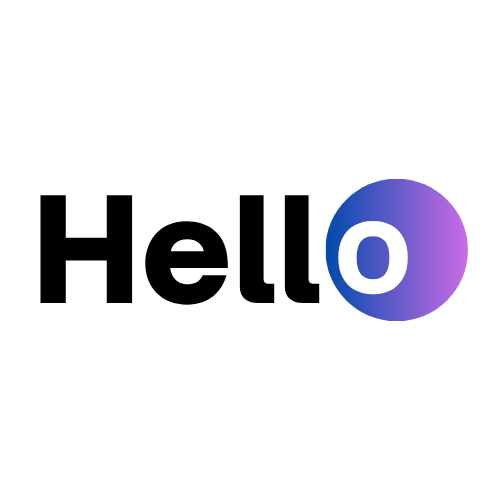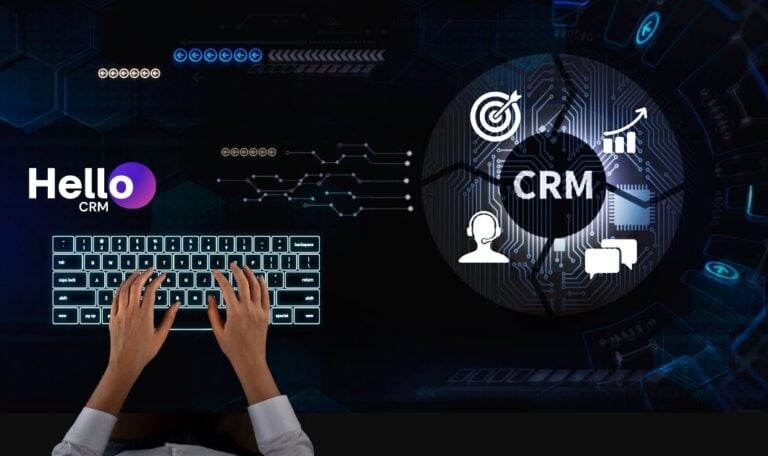Introduction
Today’s customers expect seamless, timely communication across multiple touchpoints — not just email. Whether it’s a reminder over SMS, a confirmation via WhatsApp, or a discovery call over the phone, prospects move across channels without thinking twice.
But for businesses, managing these channels separately often leads to:
- Missed follow-ups
- Repeated messages
- Fragmented data
- Poor customer experience
The solution? Multichannel CRM integration — a unified strategy that connects voice, SMS, and email into a centralized workflow.
In this article, we’ll explore:
- Why integrating voice, SMS, and email is essential for sales and support
- How to build a smart, coordinated communication flow
- The benefits of combining these channels inside Hello CRM
- Real-world examples and workflow models that improve conversions
Why Multichannel Matters More Than Ever
The average customer engages across at least 3 different communication platforms before making a purchase or booking a demo. According to McKinsey and Salesforce:
- 78% of customers expect consistent communication across channels
- 80% say experience is just as important as the product
- 60% prefer real-time or near-instant interactions
In sales and support, this means you can’t afford to silo communication. If your email campaign is separate from your call strategy — or your SMS reminders aren’t logged in your CRM — the result is disjointed outreach and lost trust.
What Is a Multichannel CRM Strategy?
A multichannel CRM strategy is a coordinated approach where email, SMS, voice, and chat are:
- Triggered based on contact behavior and lifecycle stage
- Managed in one centralized system (your CRM)
- Logged and visible across your team
- Designed to work together, not compete for attention
The goal isn’t to overwhelm your contacts — it’s to use each channel for what it does best, based on context.
Strengths of Each Channel
| Channel | Best For | Strengths |
|---|---|---|
| Long-form content, resources, formal communication | Visuals, links, content-rich | |
| SMS | Reminders, alerts, short nudges | High open rates, fast delivery |
| Voice | Personal connection, real-time qualification | Empathy, complex discussions |
By combining all three, you can design a communication journey that feels natural, professional, and responsive.
Why Voice Still Matters (More Than Ever)
Despite the rise of digital messaging, phone calls remain critical, especially in B2B sales or service-led businesses.
Voice is the only channel that offers:
- Real-time engagement
- Tonal nuance and emotional intelligence
- High-value touchpoints like discovery, demo, and closing conversations
But here’s the challenge: voice communication is harder to scale — unless it’s automated.
That’s where AI voice agents and CRM-integrated calling tools step in. Hello CRM allows you to automate voice outreach, sync call data, and combine it with SMS and email in one cohesive journey.
How to Combine Voice, SMS & Email in Hello CRM
Let’s walk through how a truly integrated communication strategy looks — and how you can build it step-by-step.
Step 1: Map the Customer Journey
Start by identifying:
- What are the key conversion points?
- Where are leads typically dropping off?
- When is it better to call vs. message?
Common stages to automate:
- New lead follow-up
- Missed meeting reminders
- Post-demo follow-ups
- Trial-to-paid conversions
- Dormant lead reactivation
Step 2: Assign Channels Based on Context
Each touchpoint should be designed based on what the contact needs at that moment.
| Stage | Channel(s) | Message Type |
|---|---|---|
| New Lead | SMS + Voice | Immediate intro call, welcome text |
| Email Unopened | SMS | Reminder or alternate offer |
| Missed Call | Email + SMS | “Sorry we missed you” follow-up |
| Demo Scheduled | Email + SMS | Calendar invite + reminder |
| No Show | Voice + WhatsApp | Rebooking attempt |
| Proposal Sent | Email + Voice | Formal doc + check-in call |
With Hello CRM, these triggers and channel actions can be automated within a workflow.
Step 3: Sync Messaging Across Channels
Avoid sending disconnected messages. Your CRM should manage message logic and history, such as:
- If a lead replies to SMS, don’t send a generic follow-up email
- If a voice agent books a call, follow-up email should reflect it
- If a contact unsubscribes from email, adjust SMS flow automatically
Hello CRM does this natively — maintaining a unified contact record across all channels.
Step 4: Use Automation to Streamline the Process
In Hello CRM, multichannel workflows can be built with:
- Triggers: New lead, form submission, no activity, etc.
- Conditions: “If not opened email in 2 days…”
- Actions: Send SMS, initiate voice call, send email
- AI logic: Adjust message timing and tone based on engagement
This means you can set up a lead nurturing journey where:
- Email goes out after signup
- SMS follows if no engagement
- Voice call initiates to qualify
- All data is logged and visible in the CRM
Example: A Unified Sales Workflow Using Voice, SMS & Email
Let’s build a sample journey for an inbound B2B lead:
| Step | Channel | Message |
|---|---|---|
| 0 min | SMS | “Hi Alex, thanks for requesting info. We’ll follow up shortly.” |
| +30 sec | Voice Agent | “Hi Alex, I’m from Hello CRM — here to help you get started. Can I ask a few quick questions?” |
| +1 hr | Send a personalized follow-up with onboarding resources | |
| +1 day | SMS | Reminder: “Did you get a chance to look over our setup guide?” |
| +3 days | Voice | Live AE call if lead qualified |
| +5 days | Send proposal + case study | |
| +6 days | SMS | “Any questions on the proposal? We’re happy to assist.” |
Benefits of Multichannel CRM Integration
1. Faster Lead Engagement
Voice + SMS ensures you reach leads immediately, even if email isn’t opened.
2. Higher Conversion Rates
By nudging leads across different channels, you reduce drop-offs and increase the odds of a response.
3. Complete Contact Visibility
Every email, text, and call is recorded in the CRM — no more chasing down updates across platforms.
4. More Efficient Sales Reps
Automation handles low-touch tasks, freeing up reps to focus on high-intent conversations.
5. AI Optimization Over Time
With Hello CRM, workflows can be adjusted automatically based on what’s working — for example, switching from voice to WhatsApp when response rates are higher.
Key Considerations When Implementing
- Get opt-in for each channel
Especially for SMS and WhatsApp, make sure users have explicitly agreed to be contacted. - Respect time windows
Don’t send messages late at night — use CRM rules to control delivery times. - Centralize your data
Avoid using tools that don’t sync directly with your CRM — disconnected systems kill personalization. - Design for human handoff
Ensure voice agents or bots can escalate to real reps when needed. - Track engagement across the full journey
Measure open rates, call success, and response timing — then optimize your workflow accordingly.
Final Thoughts
Customers don’t think in channels — they just expect to be heard. By integrating voice, SMS, and email inside your CRM, you can meet them where they are — and respond like you’re always one step ahead.
With Hello CRM, building and managing these workflows doesn’t require a patchwork of tools or complicated integrations. You get:
- AI voice agents
- Native SMS and email
- Multichannel triggers and conditions
- Real-time syncing and reporting
- One centralized dashboard
Start building a smarter communication strategy today.
Try Hello CRM for free or book a live demo to see how multichannel automation can transform your pipeline.





